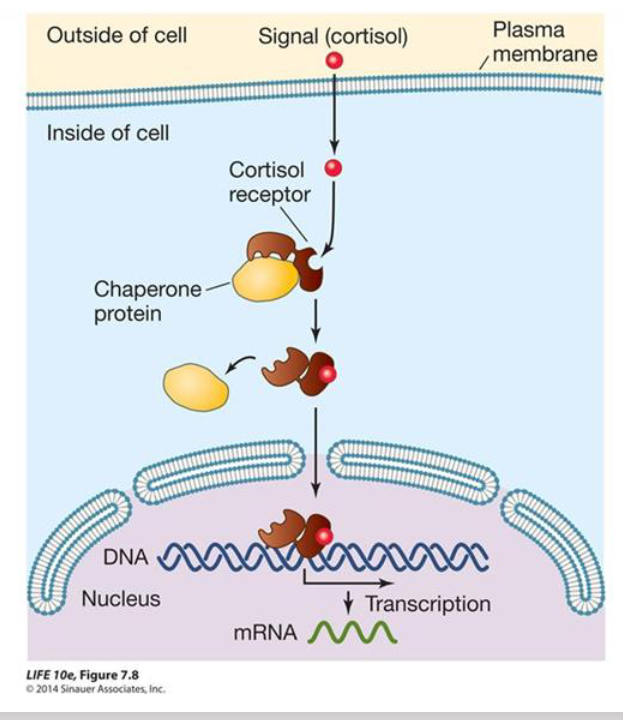Intracellular signalling mechanisms
1/22
There's no tags or description
Looks like no tags are added yet.
Name | Mastery | Learn | Test | Matching | Spaced |
|---|
No study sessions yet.
23 Terms
Physical signals
Mechanical
Thermal
Gases and light
Chemical signals
Small molecules such as:
hormones
Neurotransmitters
Growth factors
Cytokines
Metabolites
Signal delivery: what are the two different natures of signal a cell can receive?
Water soluble
Lipid soluble
Water soluble signals
Easily transported around the body in water based systems = transport of growth factors, hormones and cytokines in the blood
They bind to the cell surface receptors expressed at the cell membranes and are able to mediate short to long term effects
Lipid soluble signals
Bind with receptors inside the cell
Main examples include steroid hormones, thyroid hormones, eicosanoids
Can diffuse through plasma membrane to reach intracellular receptors because they are small and non-polar
Intracellular receptors tend to be transcription factors which influence gene expression
Mediate long term effects within the cell itself
What are the 3 main classes of receptors located at the CELL SURFACE MEMBRANE:
Ion channel receptors
G protein coupled receptors
Enzyme linked receptors
-receptors with intrinsic enzyme activity
-enzyme associated receptors
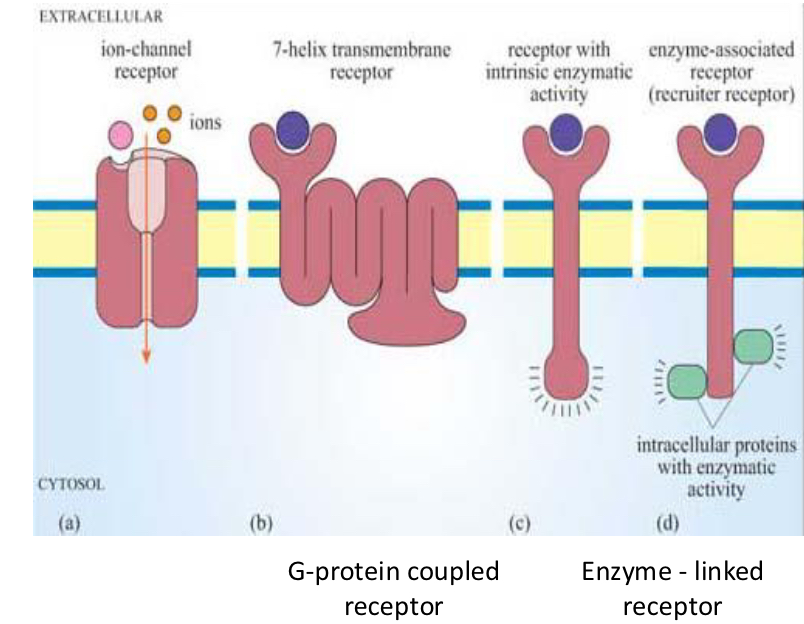
Receptors activation causes the modification of intracellular proteins in a cascade infill the target protein. What are the 3 main reasons for signal transduction?
amplify a signal
Enable signal integration
Enable regulation
What are the two main pathways for intracellular signal transduction?
Second messengers
Kinase cascade
What are molecular switches?
Related to intracellular cascade events, switched on/off based on signal
Phosphate binding proteins
Protein activation: phosphorylation by protein kinase
Protein deactivation: dephosphorylation of proteins by protein phosphate
GTP- binding
Protein activation: GTP binding to the protein will introduce the signal
Protein deactivation: GTP hydrolysis of the protein will remove the signal
What proteins link 7 TM alpha helices spanning the receptor to amplify enzymes?
trimeric G proteins
How do trimeric G protein receptors induce a signal?
In an inactive state, receptor is composed of a,b and y subunit. With the a subunit bound to GDP
On binding with ligand to the 7 TM receptor a CONFORMATIONAL CHANGE occurs which enables interaction with the G protein
The GDP of the alpha subunit is released and replaced with GTP causing activation of the alpha subunit which dissociates with the complex
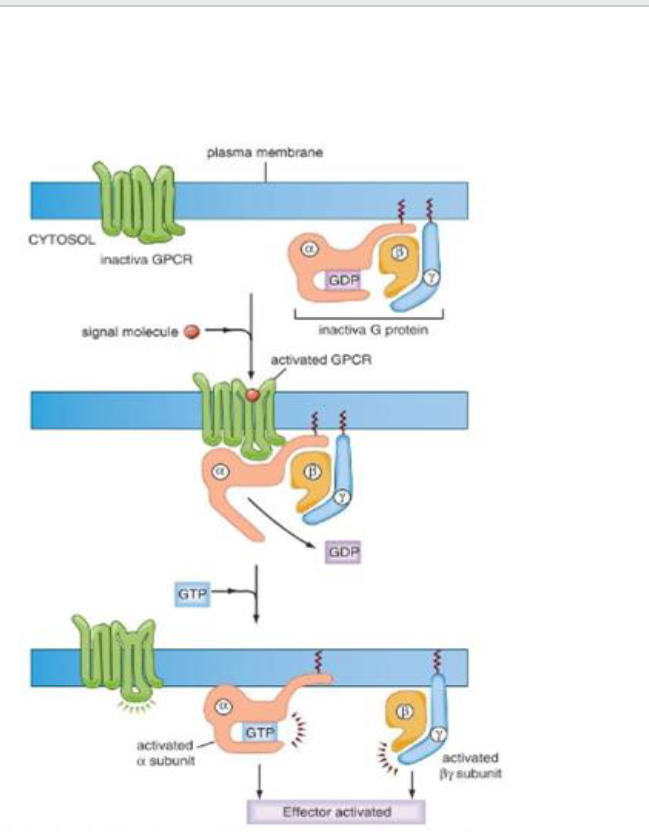
What receptors play a large role in diagonal transduction of adrenaline?
Trimeric G proteins
How do trimeric G protein receptors create variation in signal pathways?
Through huge variation in the subunit combinations of alpha, beta and gamma that are physically possible
How does signalling occur in enzyme linked receptors?
ligand causes dimerisation of two single TM protein chains
Dimerisation permits phosphorylation of the intracellular domain and subsequent recruitment of adaptor proteins
Adaptor proteins are responsible for mediation of signal transduction intracellularly, they often link with monomeric G proteins to permit intracellular signal transduction

What are monomeric G proteins associated with?
With catalytic receptors = involved in responses to ligands including hormones and growth factors
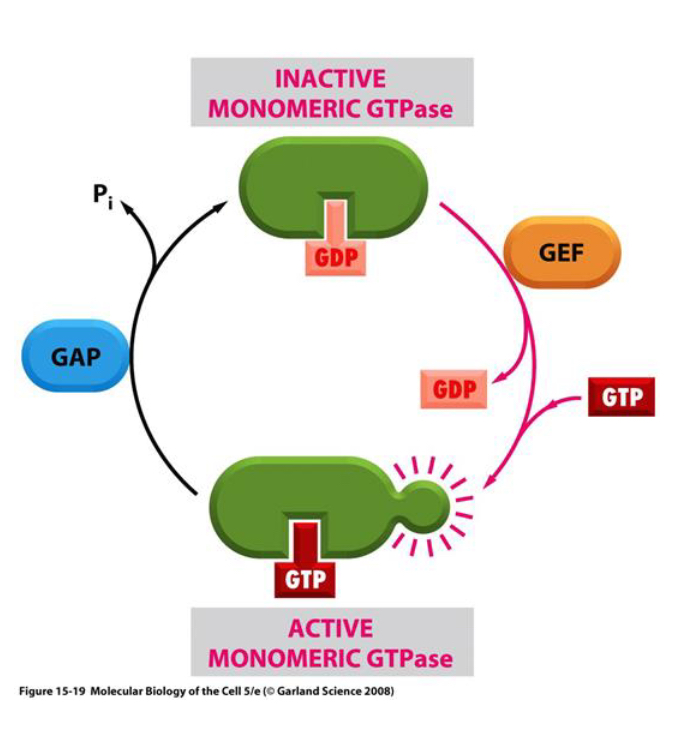
Monomeric G protein activation
activation by phosphorylation of the intracellular domain of catalytic receptors causes recruitment of adaptor proteins which recognise the phosphotriose residues
This causes the recruitment of a protein specific to guanine exchange factor (GEF) = enables the activation of the monomeric G protein

What do active GTP bound monomeric G proteins have the ability to do?
Phosphorylate their substrate. Kinases activated phosphorylate subsequently kinases in cascade
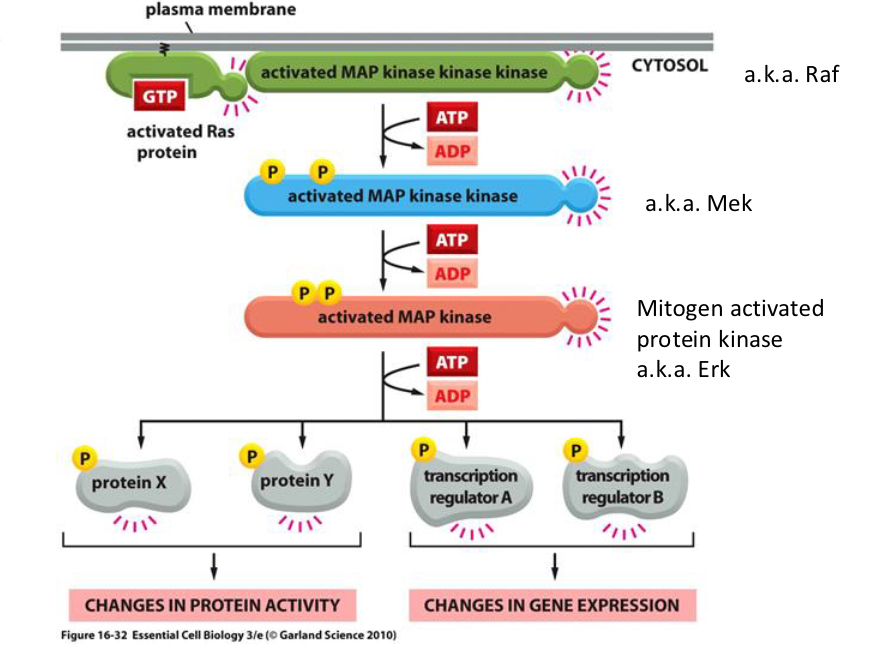
Kinase linked receptors
These proteins don’t have intrinsic enzyme activity, instead they associate with proteins that have enzyme activity
JAK-STAT pathways
A type of active kinase linked receptor signalling pathway.
ligand binding causes dimerisation of single TM chains
JAK proteins cross phosphorylate tyrosine residues of the intracellular domain of the receptor
STATs bind to phophorylated residues and undergo tyrosine phosphorylation themselves by JAKs
Phosphorylated STATs dimerise and trans locate to the nucleus to mediate DNA transcription
Eg: prolactin and cytokine receptors
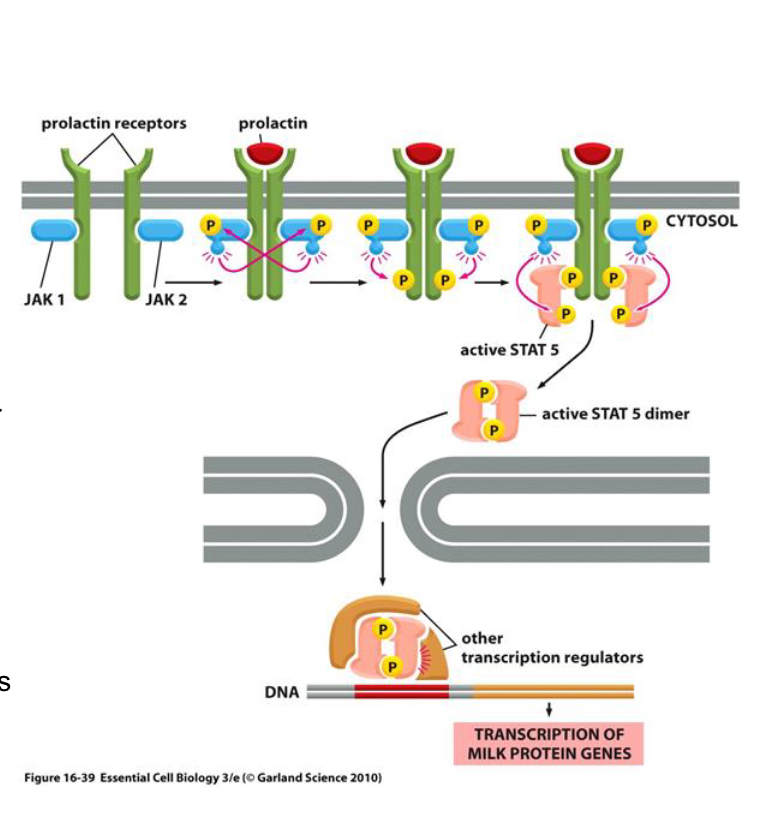
Why can steroid hormones use intracellular receptors?
They are lipid soluble - so can diffuse across cellular membranes
What are the two types of intracellular receptors?
T1 - receptor that exists in the cytosol or nucleus
T2 - receptors which are occupied in an inactive state by a co-repressor protein
Binding of ligand to receptor = activation and ability to translocate into the nucleus. Hormones bind to hormone response element within gene promoter = enables transcription
